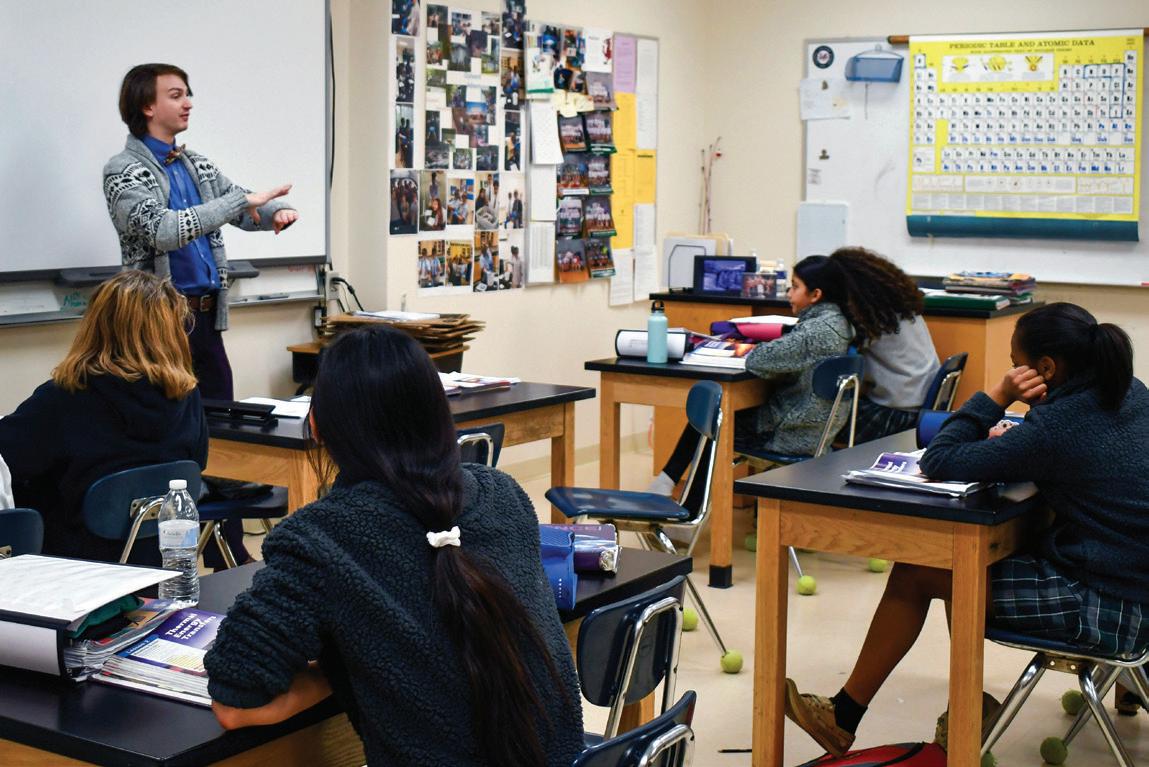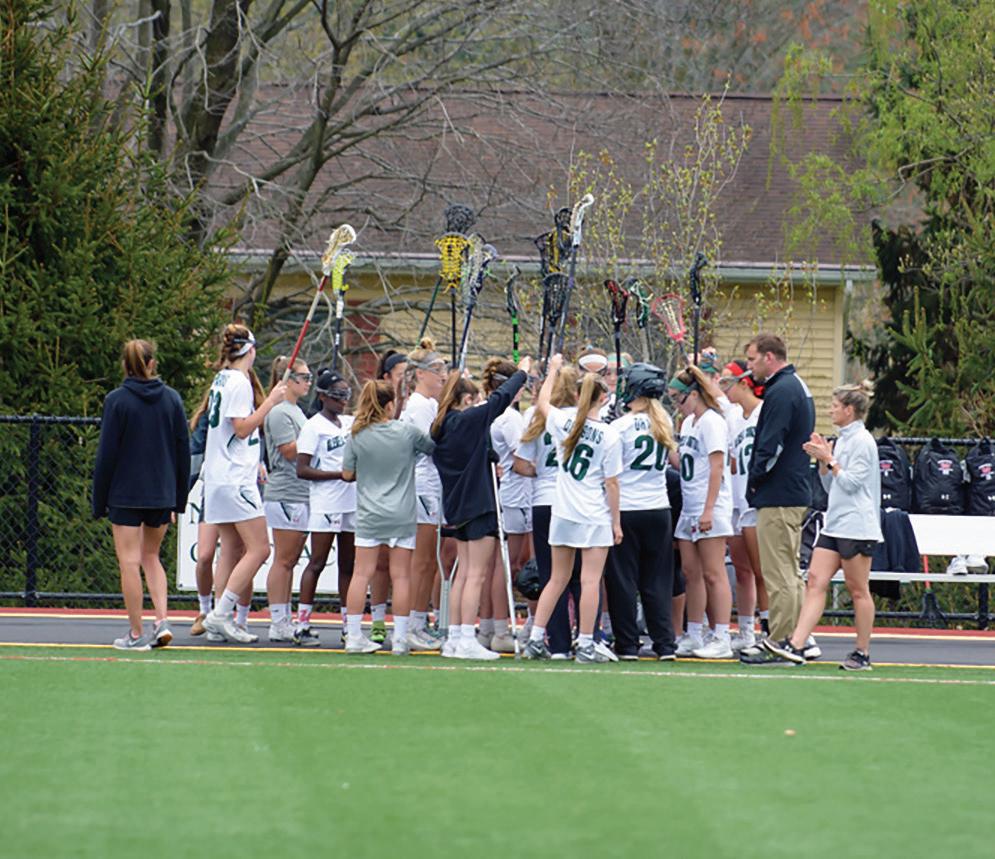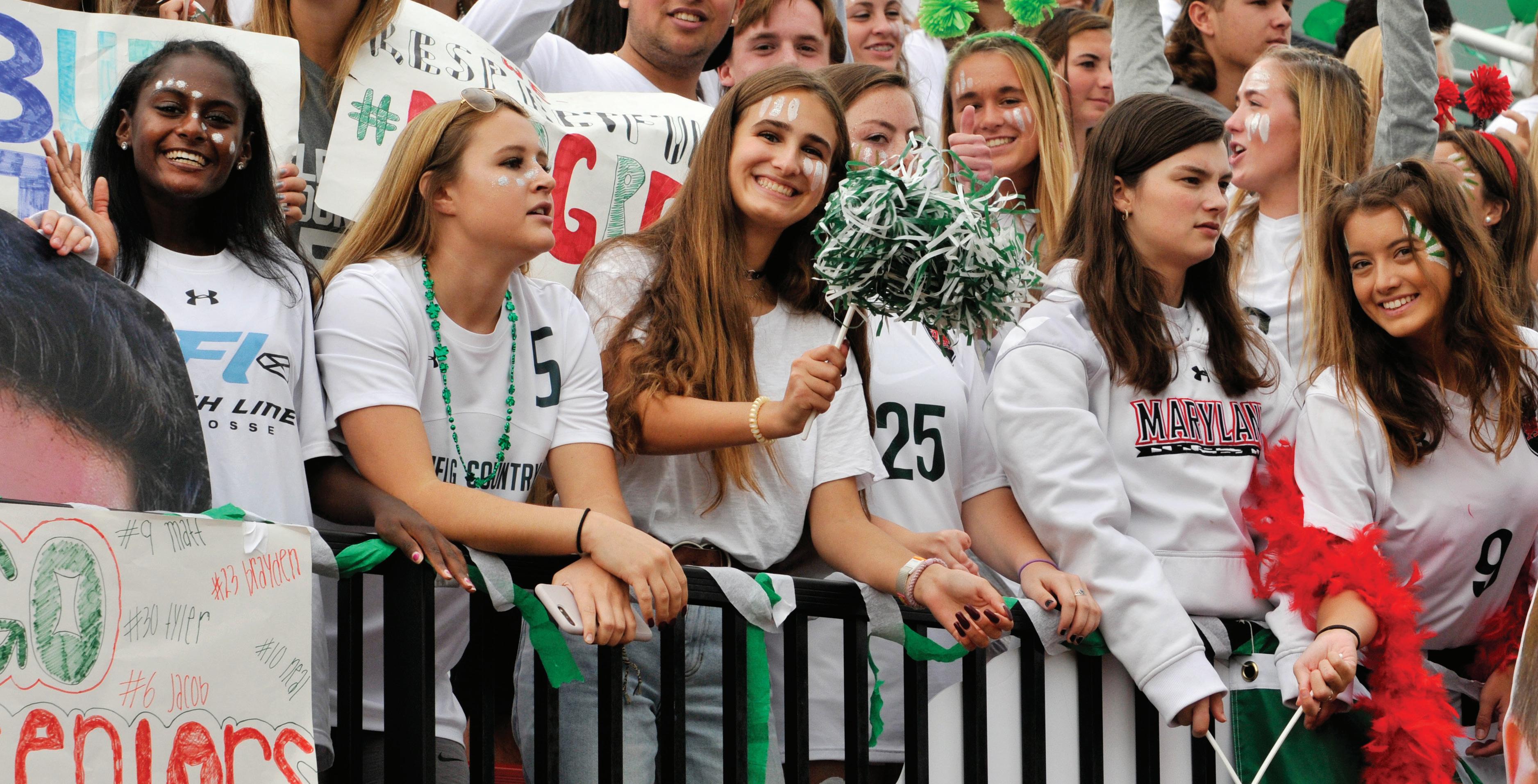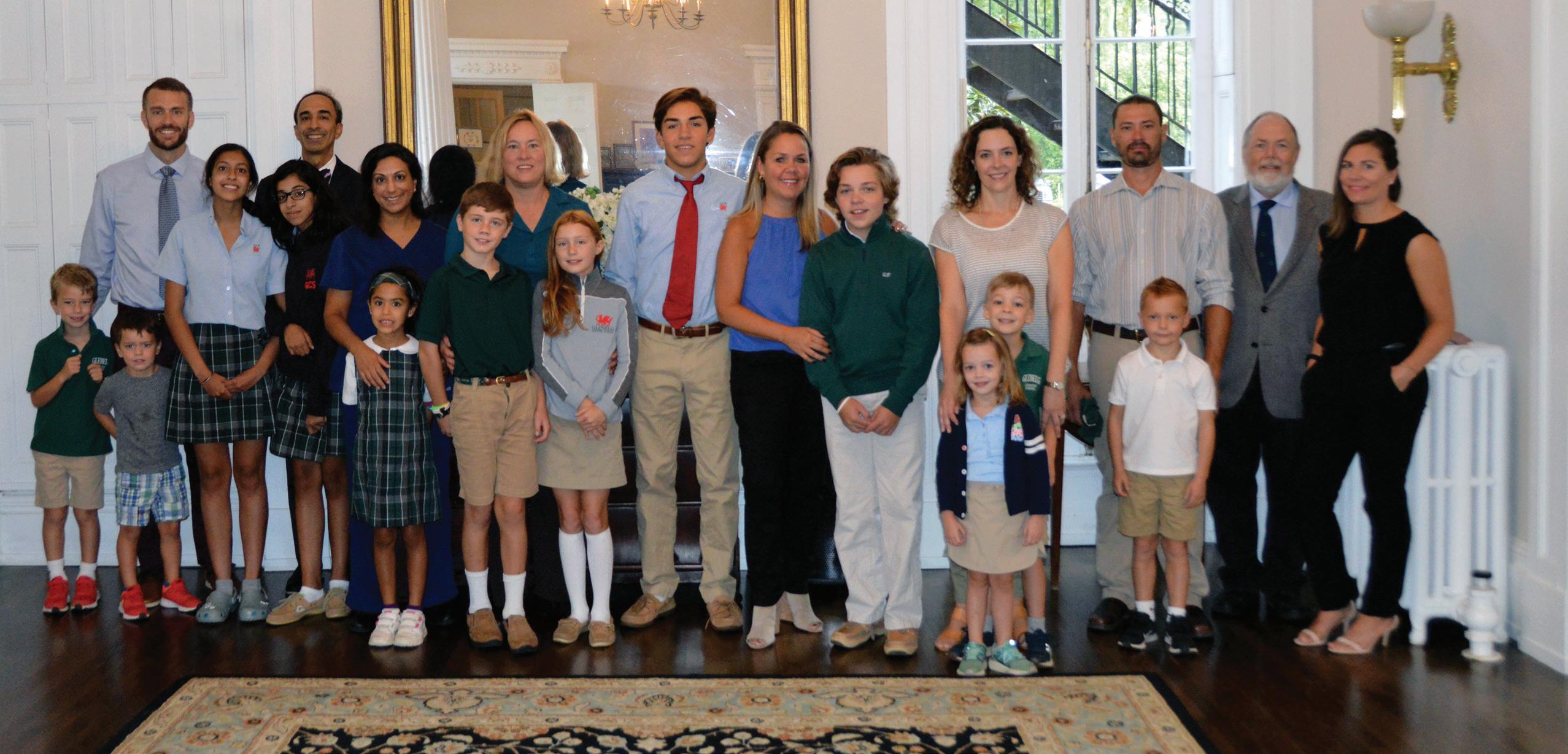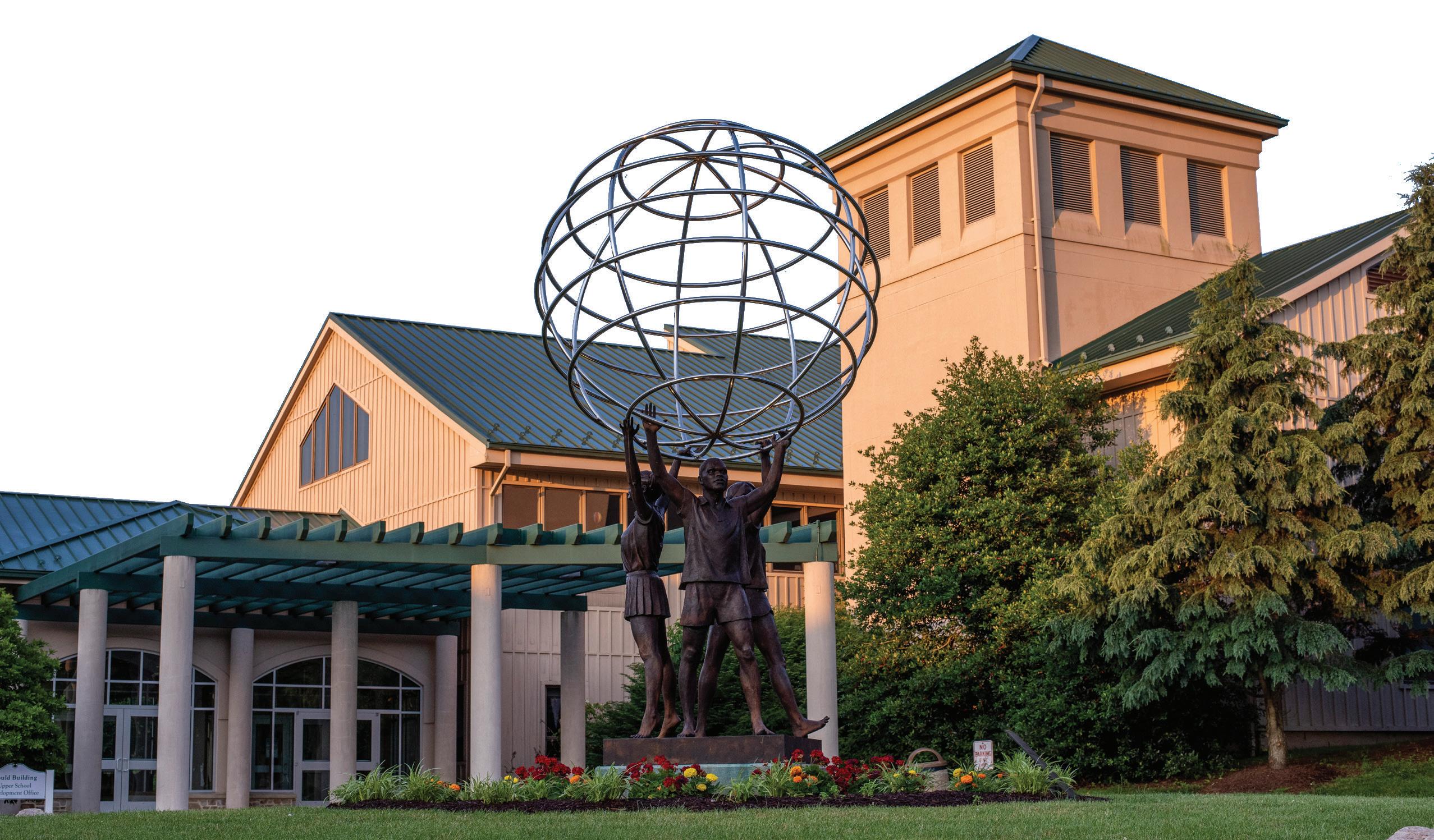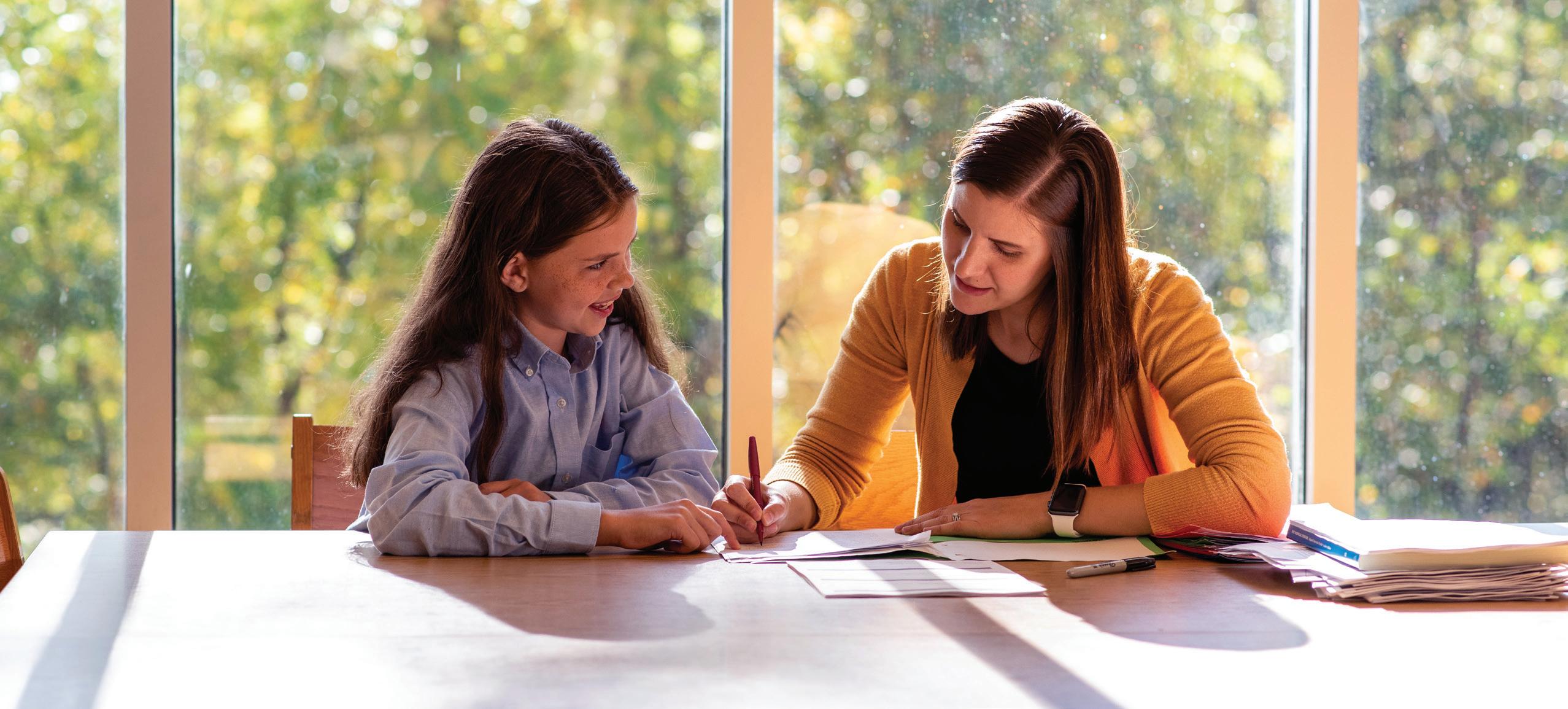
6 minute read
MIDDLE SCHOOL
THE EVOLUTION OF THE MIDDLE SCHOOL
By Brita Stewart MIDDLE SCHOOL TEACHER
It is the first Friday back to school after Winter Break, and the finalists and alternates for the Middle School Barlow Public Speaking contest are perched in front seats of the Mulitz Theater, poised to present their pieces to a full house.
This is the culmination of our school’s longest-standing tradition. Since the 1965 school year, every student in second through eighth grade memorizes a piece of literature and recites it to his or her class. A handful of students are selected to compete in the Middle School competition in early January. Students’ wide-ranging selections are a reflection of the diversity that we enjoy at Glenelg Country School. Pieces by contemporary spoken-word artists Roxy Azari (who visited and conducted poetry workshops with our students a few years back) and Britta B. presented alongside traditional favorites by the likes of Walt Whitman and Maya Angelou are not unusual. The choices exemplify the Middle School experience—firmly rooted in tradition with an eye to the future.
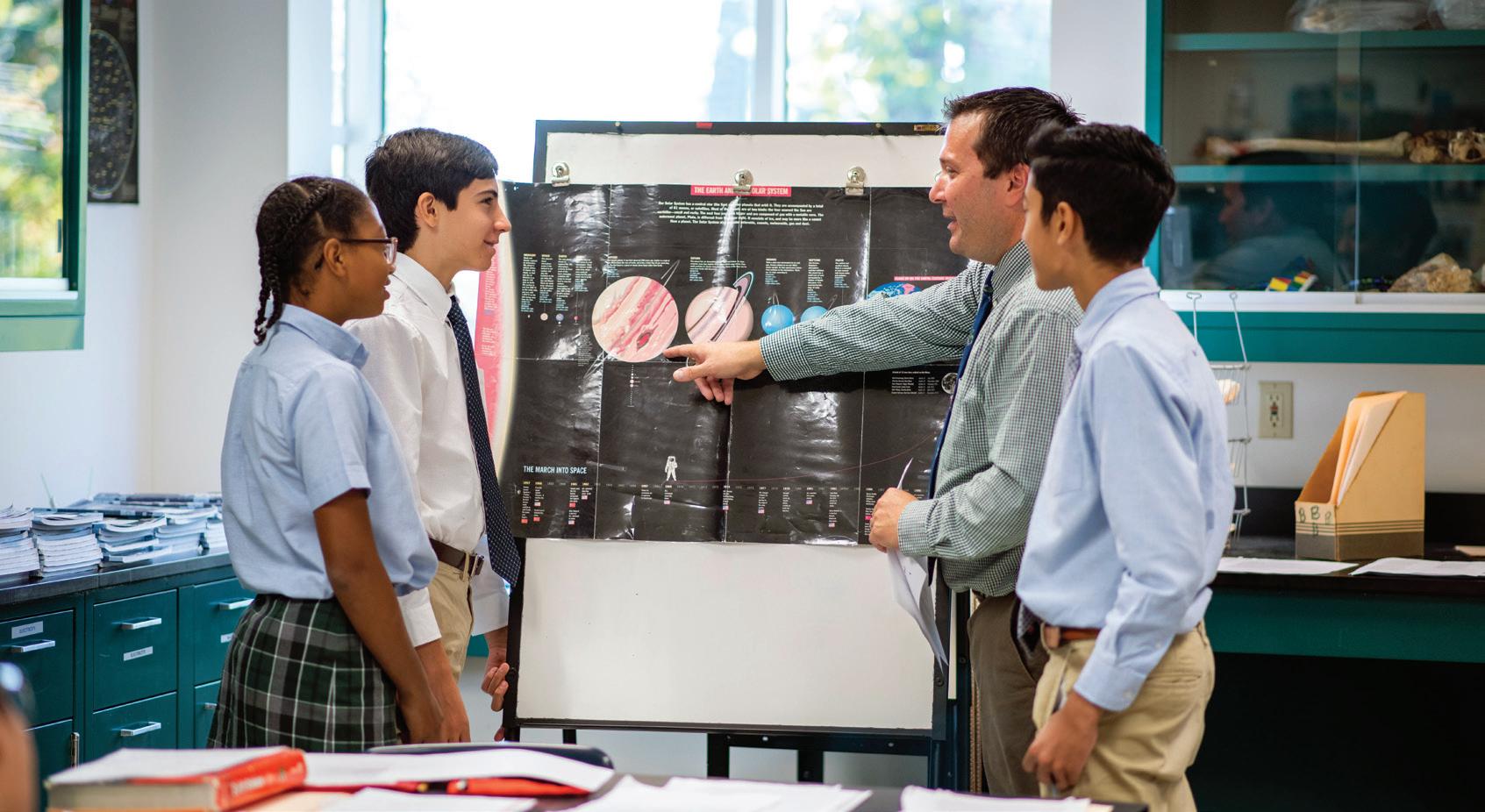
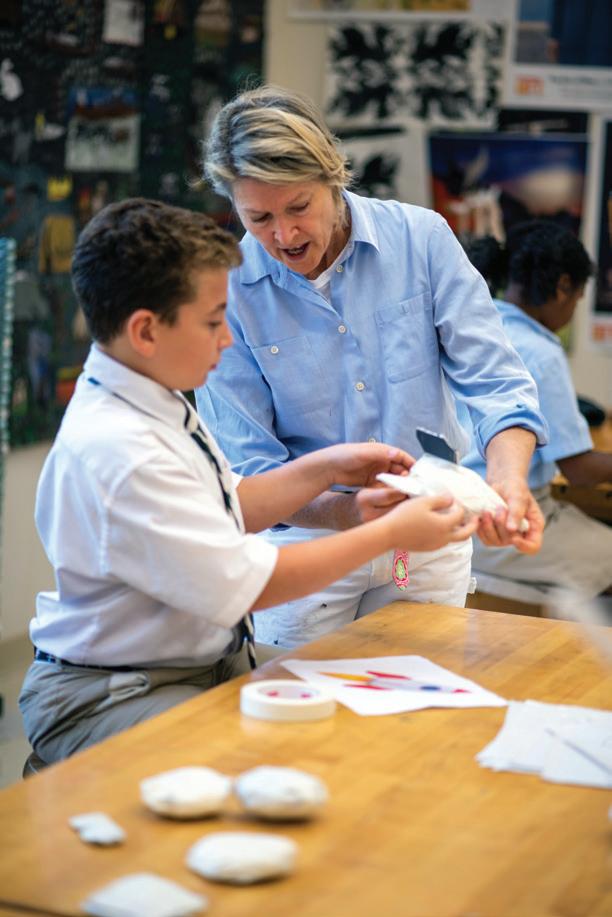
Above from left: Nichelle Desbordes ’24, Michael Hersey ’24, Mr. Silvestri, and Roy Sharma ’24; Kenaan Tujjar ’26 and Mrs. Roenigk
When the first eighth graders graduated in the spring of 1956, the Upper School was still 29 years away from opening its doors. Therefore, Grades 6-8 were dedicated to preparing students for any academic challenge that would follow. The need to produce versatile and wellrounded students while fulfilling the vision of the school’s founders led to the development of a program that was ahead of its time, offering experiential and project-based learning long before those educational buzzwords came into vogue. The five teachers charged with educating the entire student body in the school’s early years had to be creative. Making use of the beautiful grounds and whatever was available in the Manor House and its outbuildings facilitated student-centered instruction. Middle School students from those first classes recall one of their teachers, Trudy Fox, teaching the class about hurricanes— not because it was next in the textbook but because a storm was in the weather forecast. With no gymnasium, the wrestling coach, Mr. Farley, used old mattresses to turn the basement into a wrestling room. And the class project? Resurrecting an old nature trail left behind by the last residential owners of the property, the Lowndes family.
The Middle School may no longer give the students a half-day on Fridays to go ice skating as it did for many years, but adventure is still at the heart of everything we do. The original faculty likely knew that incorporating hands-on learning, physical activity, and exposure to the arts throughout the disciplines into the daily schedule of their students, though somewhat progressive at the time, was simply good teaching. But now we know that their practices also made sense scientifically. In her 2012 book The Brain-Targeted Teaching Model for 21st-Century Schools, Mariane Hardiman writes that “offering students choices relating to the content and process of learning has been shown to provide a sense of agency or control over outcomes and is associated with increased levels of motivation and achievement.” In other words, research strongly supports the educational principles that the Middle School has long held dear.
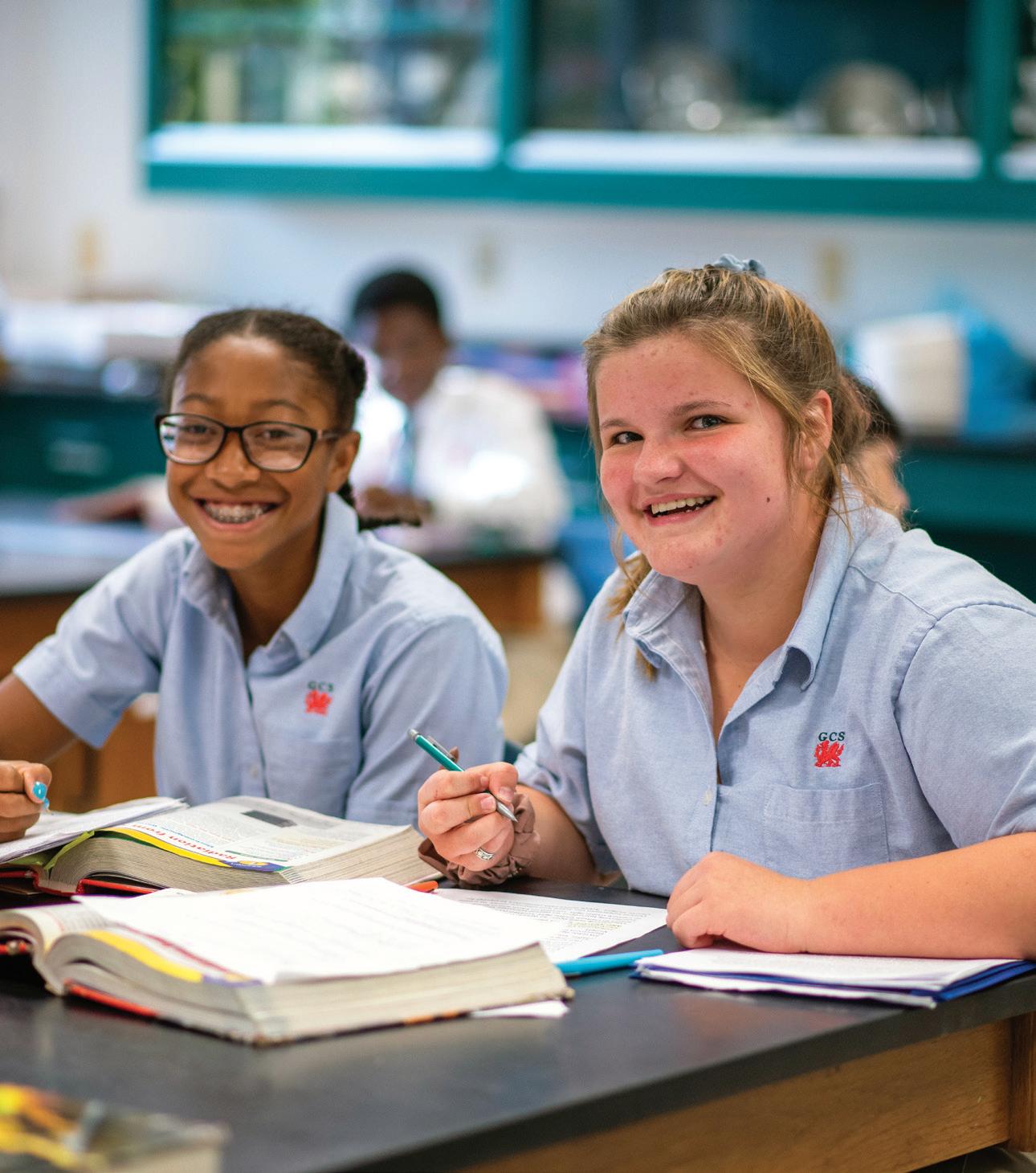
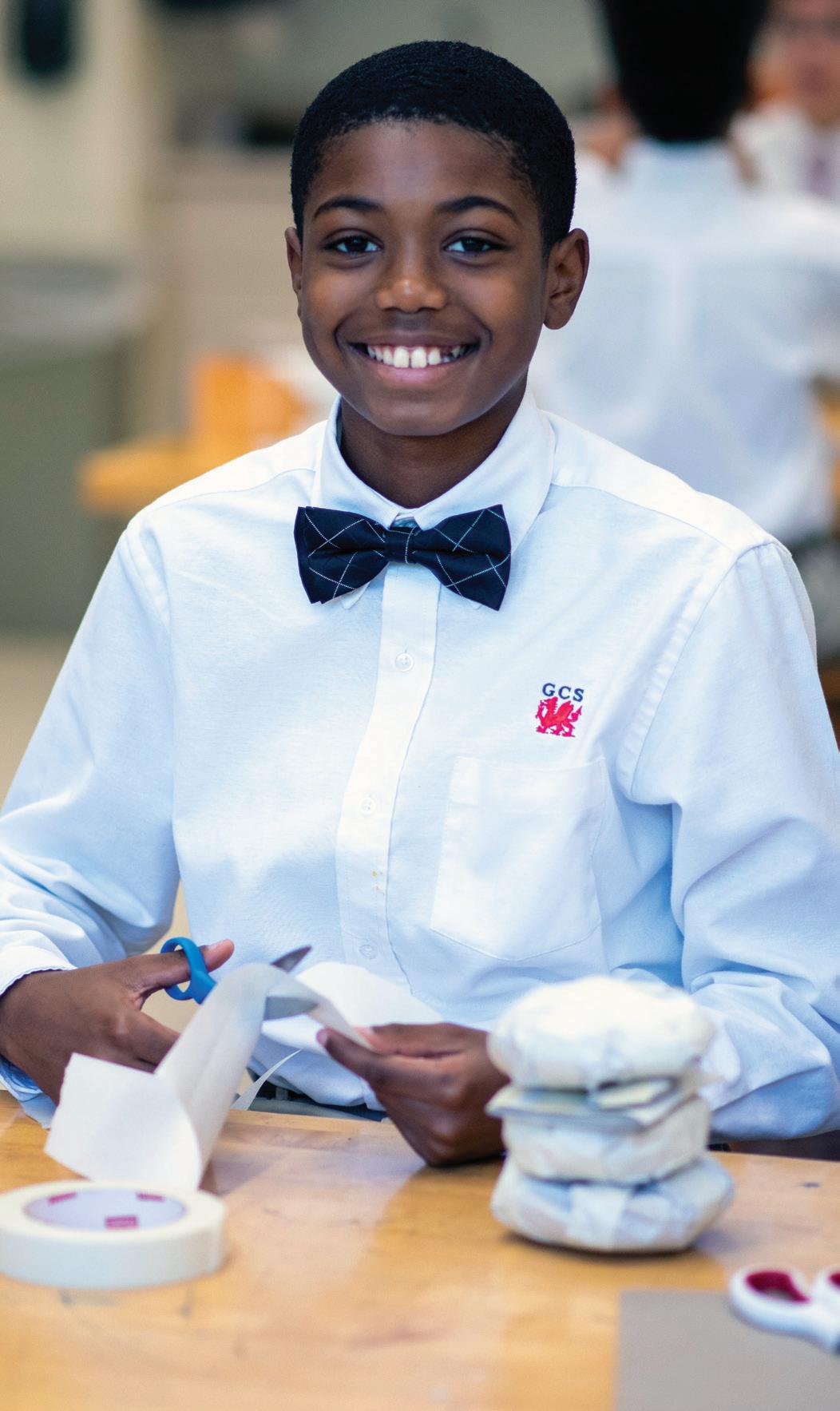
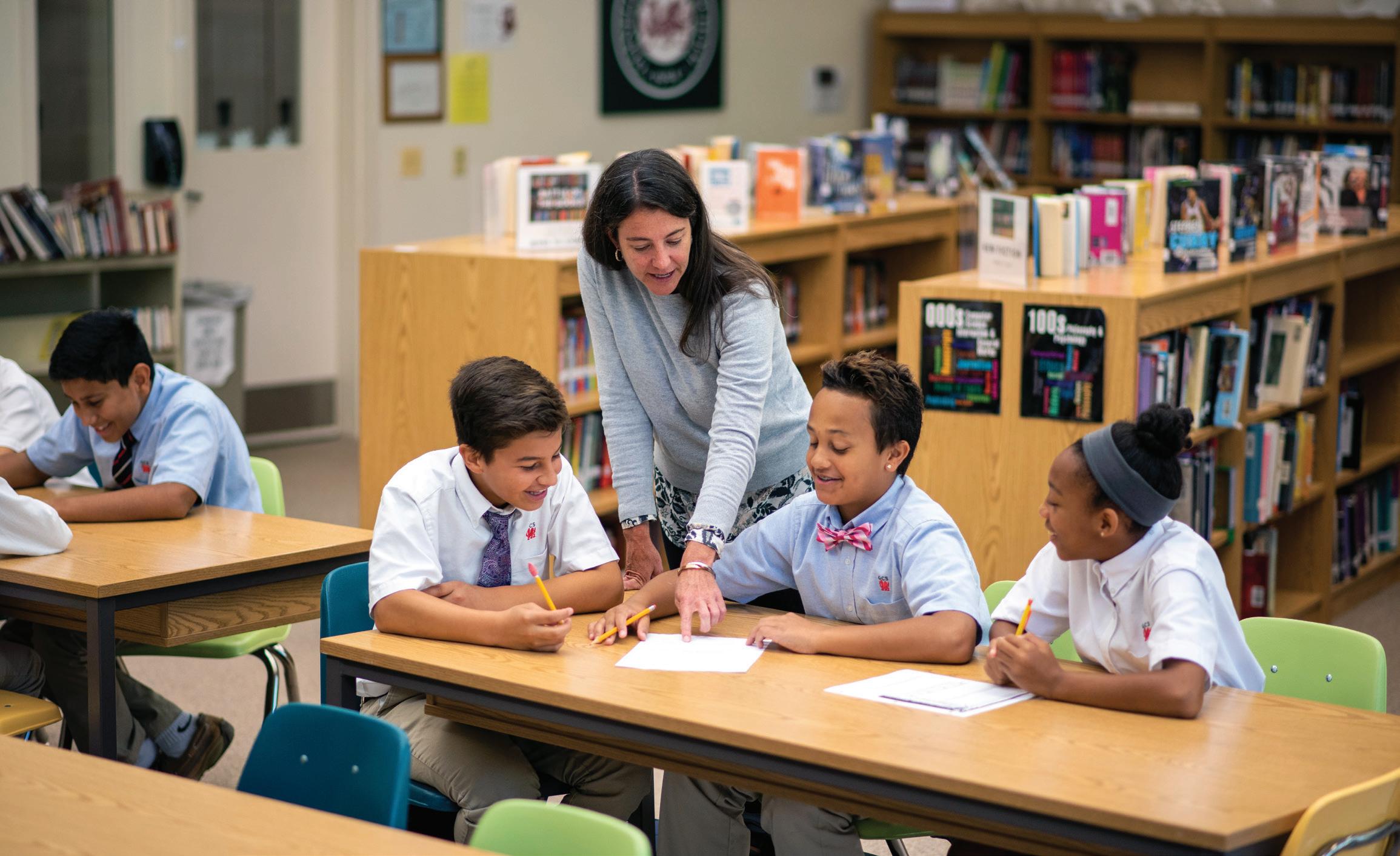
These days, the ongoing work of learning might look a little different in the Middle School than it did in 1954. In the IDEA Lab, a student successfully uses a Makey Makey to play Beethoven’s “Ode to Joy” on a line of ripening bananas. In Connections class, a group of students negotiate the attributes of a species that inhabits their imagined country’s biomes as part of an ongoing project exploring community and identity. And in the art studio, the second trimester means projects with clay. Building on skills learned in sixth grade, seventh-grade students create canopic jars to house organs for their World History pharaohs’ sarcophagus project. Eighth graders enjoy a “clay on words” opportunity with visual puns: a stick of butter with wings? Butterfly. A capital letter C, shaped like a handsaw? Seesaw.
We still know that developing creativity, critical thinking, and collaboration is good teaching, and that students learn best when they have a voice in their own learning and are completely engaged in whatever it is that they are doing. For decades, students in eighth grade read John Knowles’ classic novel A Separate Peace, in which he recalls the famous French quote, “Plus c’est la même chose, plus ça change”—the more things change, the more they stay the same. This remains true in the Middle School.
FACULTY SPOTLIGHT Noah Konkus
Middle School science teacher Noah Konkus joined the faculty this year as one of the school’s youngest teachers. Having graduated from Yale College, we look forward to the impact that Konkus will make on our Middle School students.
PLEASE GIVE US SOME BACKGROUND ON YOURSELF AND YOUR EXPERIENCE
I received a Bachelor of Science in psychology from Yale College in 2018. Having spent three years performing research, I was excited by the opportunity to take my passion for science out of the laboratory and into the classroom. I am a lifelong learner who has always been excited about sharing knowledge with others, and it has been wonderful to start a career where I can do this every day. Middle school science is the perfect opportunity for students to explore and inquire about the natural laws of both physics and life. The saying “seeing is believing” rings especially true in my classes. Whether testing principles of gravity or encountering an organism with seemingly alien adaptations, I believe that it is critical students have opportunities to see for themselves the truths of the world in which they live.
WHY TEACHING?
My great-grandmother taught for over 40 years, and I look up to the legacy she left in the classroom. She taught me that every moment of joy is an opportunity to learn something novel. We would talk for hours about library books, plants near her house, or photographs from her travels around the world. She influenced me to develop a love for learning that I have carried throughout my life.
WHAT BROUGHT YOU TO GCS?
It was wonderful to have the opportunity to return to my home state of Maryland to teach for the 2019–2020 school year. I was drawn to the sunny outlook of the GCS community and the sense of trust and communication between teachers, students, and parents. DESCRIBE YOUR TYPICAL SCHOOL DAY
A typical GCS day involves teaching three sections of seventh grade Life Science and one section of sixth grade Physical Science. In Grade 7, students learn about the interconnectedness of all the organisms on Earth through the process of evolution. Meanwhile, Grade 6 students encounter and test the basic principles of physical and chemical systems. I spent the first trimester as both an assistant coach for the Middle School cross-country team and ensemble leader for the Middle School production of “The Lion King”. Now, I am excited to be the advisor for the middle school’s first Dungeons & Dragons club.
WHAT ARE YOUR GOALS WITH STUDENTS, AND WHERE DO YOU EXPECT TO SEE THE SCIENCE DEPARTMENT GO THROUGH YOUR TEACHING?
I hope to give my students hands-on experience performing inquiry-based investigations about the information they encounter in their textbooks and online. I want students to challenge themselves to not only demonstrate scientific principles but also ask themselves, “Why do they occur?”
